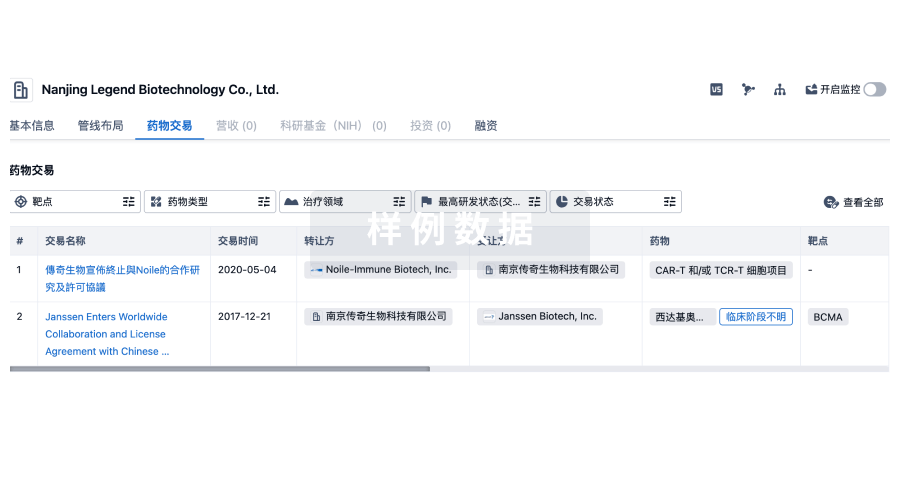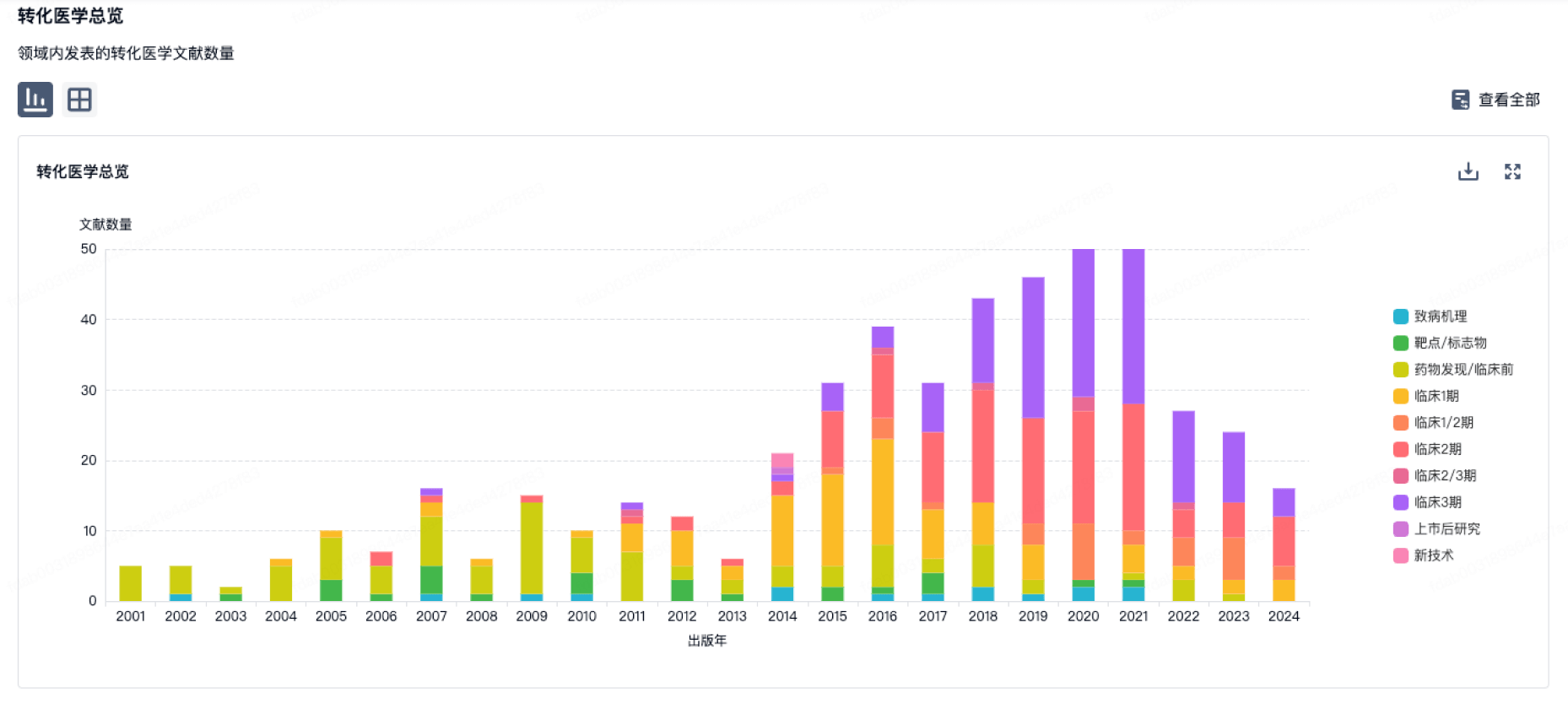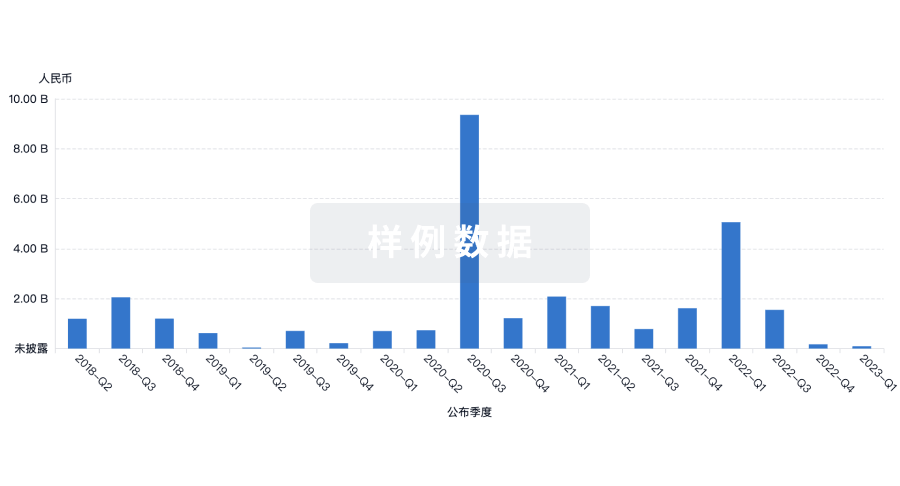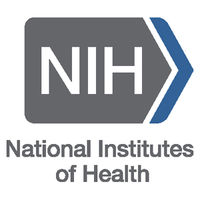预约演示
更新于:2025-12-06

Beth Israel Deaconess Medical Center, Inc.
更新于:2025-12-06
概览
标签
肿瘤
皮肤和肌肉骨骼疾病
感染
小分子化药
治疗性疫苗
单克隆抗体
疾病领域得分
一眼洞穿机构专注的疾病领域
暂无数据
技术平台
公司药物应用最多的技术
暂无数据
靶点
公司最常开发的靶点
暂无数据
| 排名前五的药物类型 | 数量 |
|---|---|
| 小分子化药 | 9 |
| 治疗性疫苗 | 2 |
| 单克隆抗体 | 2 |
| 树突状细胞疫苗 | 2 |
| 化学药 | 1 |
关联
18
项与 Beth Israel Deaconess Medical Center, Inc. 相关的药物作用机制 HIV包膜蛋白gp120抑制剂 |
非在研适应症 |
最高研发阶段临床2期 |
首次获批国家/地区- |
首次获批日期- |
靶点- |
作用机制 免疫刺激剂 |
在研适应症 |
非在研适应症- |
最高研发阶段临床2期 |
首次获批国家/地区- |
首次获批日期- |
923
项与 Beth Israel Deaconess Medical Center, Inc. 相关的临床试验NCT07263230
An Open-label Single Center Study Evaluating the Safety and Efficacy of Roflumilast Foam 0.3% in Subjects With Hidradenitis Suppurativa.
This study investigates the efficacy of topical roflumilast foam in patients with HS.
开始日期2026-04-01 |
NCT07260916
Minimally Invasive Neuroendoscopic Ultra-Early Targeted ICH Evacuation (MINUTE) Trial
MINUTE is a prospective, multi-center, randomized, controlled, blinded assessor, adaptive enrichment design, clinical trial. Eligible patients with spontaneous BGH ≥20 mL will be randomized 1:1 to either minimally invasive endoscopic SCUBA evacuation plus standard medical management or standard medical management alone; the time of randomization will be used to classify participants in one of two cohorts: 1) those randomized <8 hours from onset, and 2) those randomized 8-16 hours from onset. Randomization is targeted to occur within 120 min of arrival to the randomizing center's Emergency Department (ED), and initiation of surgery is targeted to occur within 120 min of randomization. Participants will be followed at 30, 90, 180, and 365 days to assess for adverse events (AEs) and utility-weighted modified Rankin Scale (UW-mRS).
开始日期2026-03-01 |
申办/合作机构 |
NCT06983730
Development of a Clinical Experimental Heat Stress Protocol and Exploration of the Effect of Niacinamide on Physiologic, Metabolic, and Biochemical Responses to Heat Stress
The goal of this clinical trial is to learn about the processes occurring in the kidneys while under heat stress in healthy volunteers. The main questions it aims to answer are:
* How do the chemicals produced by the body change under conditions of higher versus lower heat stress?
* What role does a specific area of the body's metabolism, known as NAD+ metabolism, play in the body's response to heat stress, and can this response be modified by taking vitamin B3?
* How do the chemicals produced by the body change under conditions of higher versus lower heat stress?
* What role does a specific area of the body's metabolism, known as NAD+ metabolism, play in the body's response to heat stress, and can this response be modified by taking vitamin B3?
开始日期2025-12-01 |
申办/合作机构 |
100 项与 Beth Israel Deaconess Medical Center, Inc. 相关的临床结果
登录后查看更多信息
0 项与 Beth Israel Deaconess Medical Center, Inc. 相关的专利(医药)
登录后查看更多信息
19,198
项与 Beth Israel Deaconess Medical Center, Inc. 相关的文献(医药)2026-02-01·SURGERY
Assessing the success of the American Association of Endocrine Surgeons research awards
Article
作者: James, Benjamin C ; Dedhia, Priya H ; Hu-Bianco, Q Lina ; Kaul, Sumedh ; Krumeich, Lauren N
BACKGROUND:
The American Association of Endocrine Surgeons supports early research and career development of junior members through 2 research awards each year. This study aimed to determine the impact of American Association of Endocrine Surgeons funding on academic productivity.
METHODS:
Measures of academic productivity of award applicants (2016-2022), including peer-reviewed publications, Hirsch index (h-index), and National Institutes of Health funding, was obtained from PubMed and SCOPUS databases and compared between award recipients and nonrecipients. In addition, a survey was sent to all award recipients since inception (2010-2022) to assess self-reported ability to complete project aims, publish manuscripts, and obtain subsequent funding.
RESULTS:
Award recipients (n = 26) had a higher post-award h-index (median 20 [interquartile range 16, 26] vs 15 [interquartile range 10, 20] P < .01) and almost twice as often obtained National Institutes of Health funding (21% vs 12%) compared with nonrecipients (n = 51). By self-report, every respondent (n = 22) indicated that they achieved at least some of their proposed aims, and 63.6% had published or were in the process of publishing their results. Most respondents (15, 68.2%) stated that their research would not have been feasible without the American Association of Endocrine Surgeons award, and 13 (59.1%) stated that their award led to subsequent grant funding, totaling $13.7 million, including $10.3 million of federal grant funding.
CONCLUSION:
Recipients of the American Association of Endocrine Surgeons research awards boast high rates of achieving project aims, publishing findings, and obtaining additional grant funding. The return on investment is already greater than 3,000% and is expected to continue to grow as these scientists pursue their research goals.
2026-02-01·EMERGENCY MEDICINE CLINICS OF NORTH AMERICA
Diagnosing Serious “Cannot Miss” Causes of Non-traumatic Headache—Thunderclap Headache and Beyond
Review
作者: Dubosh, Nicole M ; Edlow, Jonathan
Headache accounts for 2% to 3% of emergency department visits annually. While the vast majority of these patients have a primary, non-serious cause, a small proportion of these patients have a "cannot miss" secondary cause that if misdiagnosed or have a delay in diagnosis, result in poor patient outcomes. The majority of serious diagnoses include subarachnoid hemorrhage, other types of intracranial hemorrhage including subdural hematoma, strokes, meningitis, and other non-neurologic etiologies. It is important for emergency physicians to identify through a careful history, physical examination, and consideration of epidemiologic factors which patients require extensive testing.
2026-02-01·EMERGENCY MEDICINE CLINICS OF NORTH AMERICA
Dizziness
Review
作者: Edlow, Jonathan ; Omron, Rodney
A structured, problem-based history and physical examination are essential for accurate diagnosis and treatment of an acutely dizzy patient. The ATTEST or STANDING algorithms are diagnostic approaches for acute vertigo patients presenting to the emergency department. First rule out stroke or look for obvious medical causes. If negative, follow either the ATTEST or STANDING algorithms to differentiate peripheral from central causes of dizziness by separating them into different categories of episodic vestibular syndrome or acute vestibular syndrome. The Dix-Hallpike maneuver is used to diagnose posterior canal benign positional paroxysmal vertigo in patients with triggered episodic vestibular syndrome.
437
项与 Beth Israel Deaconess Medical Center, Inc. 相关的新闻(医药)2025-11-14
Dr. Takoudes Brings over Two Decades of Clinical Expertise to Support Sona’s Commitment to Advancing Safe, Compliant, and Patient-Centered Ultrasound Technology
I’m honored to continue this journey alongside Sona as Medical Advisor.”
— Dr. Takoudes
BOSTON, MA, UNITED STATES, November 14, 2025 /
EINPresswire.com
/ --
Sona
, the first free, HIPAA-compliant platform that securely delivers shareable ultrasound images directly to a patient’s phone, today announced Tamara C. Takoudes, MD, FACOG, as its trusted Medical Advisor. Dr. Takoudes has played a key advisory role throughout the platform's development, helping shape Sona’s clinical strategy as the company expands its footprint across both medically necessary and elective ultrasound and OB/GYN offices nationwide.
A board-certified physician in Maternal-Fetal Medicine and Fellow of the American College of Obstetrics and Gynecology, Dr. Takoudes brings more than two decades of clinical expertise in high-risk obstetrics. She was an Art History major at Columbia College for her undergraduate work and then attended medical school at the Valegos College of Physician and Surgeons. Her residency was at Harvard’s Beth Israel Deaconess Medical Center and then she spent three more years for her Maternal Fetal Medicine fellowship at Brown University’s Women and Infants Hospital. She then went on to be on faculty at Beth Israel Deaconess Medical Center (BIDMC) and directed the Joslin Diabetes in Pregnancy program until 2015. Currently she works at hospitals outside of Boston to provide high risk care to patients in the community.
“We’re thrilled to welcome Dr. Takoudes to the Sona team as our trusted Medical Advisor,” said Ellen Murphy, CEO of Sona. “Her extensive experience in maternal-fetal medicine provides invaluable insight into the needs of OB/GYN medical practices, helping us ensure that Sona remains a secure, streamlined solution for delivering these important medical images and precious keepsakes to families and physicians.”
Dr. Takoudes has practiced high-risk obstetrics since 2004 and is a co-founder of Boston MFM, a private practice specializing in maternal-fetal medicine. She has extensive experience managing complex pregnancies, including preterm labor, multiple gestations, diabetes in pregnancy, preeclampsia, and prenatal diagnosis, and is highly skilled in fetal diagnostic procedures and maternal-fetal care.
“I’m honored to continue this journey alongside Sona as Medical Advisor,” said Dr. Takoudes. “As a clinician, I’ve seen firsthand the excitement Sona brings to patients and their families, and I look forward to helping ensure the platform continues to provide a safe, efficient, and easy-to-use solution for sharing high resolution ultrasound images.”
Sona’s solution is free for offices to use and takes just 10-15 minutes to set up. Sona not only improves the patient experience, but also allows sonographers to stay HIPAA-compliant while providing those keepsake images to patients. Sona is now available in OBGYN and ultrasound offices across 14 states with more being onboarded every week.
To learn more about Sona and join our growing network of
providers
, visit:
https://www.sonagram.com/ultrasound-providers
or schedule a
demo
at
https://www.sonagram.com/demo
.
###
About Sona
Sona (Sonagram, Inc.) is a Boston-based health technology company dedicated to modernizing the ultrasound experience for providers and families. HIPAA-compliant and free for expectant parents, Sona delivers ultrasound images and clips directly from the machine to patients’ phones, helping families share and preserve their pregnancy memories in the digital age. For more information on Sona, visit
www.sonagram.com
.
Samantha Breen
Opportunity PR (for Sona)
+1 949-290-2834
samantha@opportunitypr.com
Legal Disclaimer:
EIN Presswire provides this news content "as is" without warranty of any kind. We do not accept any responsibility or liability
for the accuracy, content, images, videos, licenses, completeness, legality, or reliability of the information contained in this
article. If you have any complaints or copyright issues related to this article, kindly contact the author above.

高管变更
2025-11-12
DFCI Foxborough nurses demand competitive pay to ensure quality patient care, saying they simply want to "level the playing field"
FOXBOROUGH, Mass., Nov. 12, 2025 /PRNewswire/ -- Nurses at the Dana-Farber Cancer Institute (DFCI) Foxborough facility will hold an informational picket on Thursday, November 13, from 5 p.m. to 6:30 p.m. outside Patriot Place in the lead up to the 8:15 p.m. Patriots vs. Jets game at Gillette Stadium. The nurses, represented by the Massachusetts Nurses Association (MNA), are calling on DFCI management to address an "unacceptable" pay disparity between Foxborough nurses and their counterparts who work for Mass General Brigham (MGB) in the very same building.
Continue Reading
Dana-Farber Foxborough nurses are picketing outside the Patriots-Jets game November 13 for a fair contract and quality patient care.
This picket follows a letter delivered in October to Dana-Farber Board of Trustees Chair Josh Bekenstein, signed by 100 percent of DFCI Foxborough nurses. The letter urged the institution to close a significant wage gap that would leave Dana-Farber Foxborough nurses earning significantly less than MGB/Brigham and Women's Hospital nurses at a clinic in the same building.
Picket Details
Date: Thursday, November 13.
Time: 5 p.m. to 6:30 p.m.
Location: Outside Patriot Place (on the sidewalk near the pedestrian gate opposite the Dana-Farber Foxborough building).
"Nurses at Foxborough deliver the same exceptional, lifesaving care that patients expect from Dana-Farber anywhere in Massachusetts,"
said Catherine Hulme, RN, DFCI Foxborough nurse and Co-Chair of the MNA Committee. "Yet Dana-Farber wants to pay us far less than MGB nurses working in the same building. Dana-Farber Foxborough nurses are simply asking to level the playing field. We provide the exact same care following the exact same policies. The wide gap in compensation is not only disrespectful, it also diminishes recruitment, retention, and job satisfaction."
DFCI Foxborough nurses emphasize that they perform advanced oncology work – administering intricate chemotherapy regimens, conducting patient education for every drug administered, rotating into the lab, and managing higher nurse-to-patient ratios than in Boston – while maintaining the same standards, certifications, and clinical expectations.
"Our patients deserve nurses who are valued and treated respectfully by Dana-Farber,"
said Nicole Maguire, RN, DFCI Foxborough nurse and Secretary of the MNA Committee. "Dana-Farber advertises that its care is the same at every campus, including Foxborough, and yet the institute refuses to equally value us. Together, we will make sure Dana-Farber Foxborough patients and nurses get what they need."
Why DFCI Foxborough Nurses Deserve Pay Equity
DFCI Foxborough nurses provide highly complex oncology and hematology care, including:
The largest enrollment in treatment trials of any Dana-Farber satellite.
Rotating into the lab – duties Boston nurses do not perform.
Cross-training to cover Oncology Nurse Navigator and charge roles.
Managing multiple complex regimens in a single shift (e.g., R-CHOP, INFED, and FOLFIRINOX back-to-back).
Handling a broader range of diagnoses than specialized Boston nurses, including solid and liquid cancers.
Conducting detailed chemotherapy education ("chemo teaches") for every drug administered.
Nurses have also noted that DFCI will be attempting to recruit hundreds of oncology nurses to its planned cancer hospital with Beth Israel Deaconess Medical Center and will need to address the lower pay DFCI is offering nurses outside its main campus in Longwood. MassNurses.org
│ Facebook.com/MassNurses
│ Twitter.com/MassNurses
│ Instagram.com/MassNurses
Founded in 1903, the Massachusetts Nurses Association is the largest union of registered nurses in the Commonwealth of Massachusetts. Its 26,000 members advance the nursing profession by fostering high standards of nursing practice, promoting the economic and general welfare of nurses in the workplace, projecting a positive and realistic view of nursing, and by lobbying the Legislature and regulatory agencies on health care issues affecting nurses and the public.
SOURCE Massachusetts Nurses Association
21%
more press release views with
Request a Demo
2025-11-07
New data reinforce Mirum’s commitment to advancing therapies and improving the lives of patients across diverse rare liver diseases.
FOSTER CITY, Calif.--(BUSINESS WIRE)-- Mirum Pharmaceuticals, Inc. (Nasdaq: MIRM), a leading rare disease company, today announced that multiple presentations featuring data from its LIVMARLI (maralixibat) and volixibat clinical programs will be shared during the American Association for the Study of Liver Diseases’ (AASLD) The Liver Meeting®, taking place November 7-11, 2025, in Washington, D.C.
The presentations highlight Mirum’s continued progress in expanding the scientific and clinical foundation for new approaches to treating adult and pediatric rare liver diseases, including new findings from the VANTAGE trial and real-world studies.
Oral Presentation A key highlight at this year’s meeting will be an oral presentation featuring additional analyses from the VANTAGE trial evaluating volixibat in adults with primary biliary cholangitis (PBC).
Abstract #0215: Volixibat Leads to Improvements in Fatigue and Sleep for Adults with Primary Biliary Cholangitis: Data from VANTAGE Trial Monday, November 10, 2025, 3:00-3:15 pm during the ‘Novel Therapies and Monitoring in Cholestatic Liver Disease’ session, Room 145, Level 1, Convention Center
Presented by Kris Kowdley, Liver Institute Northwest, Seattle, Washington, USA
Poster Presentations In addition to new volixibat data, several abstracts highlight real-world experience with maralixibat and insights from genetic testing in cholestasis.
Abstract #4411: Maralixibat, an Ileal Bile Acid Transporter Inhibitor, Reduces Cholestatic Pruritus in PSC: Real-World Experience Monday, November 10, 2025, 1:00-2:00 pm Posters and Exhibit Hall, Level 2, Convention Center
Presented by Dr. Adrielly Martins, University of Miami, Florida, USA
Abstract #4412: Clinical Utility of Comprehensive Genetic Testing in Adult Cholestasis: Insights from 856 Panel Tests Monday, November 10, 2025, 1:00-2:00 pm Posters and Exhibit Hall, Level 2, Convention Center
Presented by Dr. Tiziano Pramparo, Mirum Pharmaceuticals, Inc., Foster City, California, USA
Abstract #4415: Exploring the Role of Ileal Bile Acid Transporter Inhibitors, Like Volixibat, in the Regulation of IL-31 and Serum Bile Acids in Patients with Primary Biliary Cholangitis: Preliminary Results from the VANTAGE Trial Monday, November 10, 2025, 1:00-2:00 pm Posters and Exhibit Hall, Level 2, Convention Center
Presented by Dr. Alan Bonder, Beth Israel Deaconess Medical Center, Boston, Massachusetts, USA
Abstract #4511: Physician Reported Assessment of Pruritus Amongst Patients with PSC: Results from a Real-World Survey in France, Germany, Italy and the United States Monday, November 10, 2025, 1:00-2:00 pm Posters and Exhibit Hall, Level 2, Convention Center
Presented by Dr. Marlyn Mayo, UT Southwestern Medical Center, Dallas, Texas, USA
Abstract #4532: Impact of Maralixibat on Caregiver Burden for Patients with Alagille Syndrome and Progressive Familial Intrahepatic Cholestasis: Baseline and 6-month Follow-up Monday, November 10, 2025, 1:00-2:00 pm Posters and Exhibit Hall, Level 2, Convention Center
Presented by Dr. Natasha Dilwali, Columbia University Irving Medical Center, New York, New York, USA
Fireside Discussion Mirum will also host an educational fireside discussion addressing current approaches to Progressive Familial Intrahepatic Cholestasis (PFIC) diagnosis and management.
PFIC Diagnosis and Treatment Fireside Discussion (Mirum-Sponsored) During The Liver Meeting, Mirum will host a session featuring Dr. Robert Gish, Loma Linda University, focused on the recognition and diagnosis of PFIC, including the role of genetic testing and disease management considerations for adults. The discussion will also include a review of clinical data for LIVMARLI in PFIC. Sunday, November 9, 2025, 1:30-2:00 pm Exhibit Hall TLM Theater
Mirum’s presence at The Liver Meeting underscores the company’s commitment to advancing therapies that improve patient outcomes across rare liver diseases. Full abstracts are available on the AASLD website. Following the conference, detailed analyses will be posted in the Publications and Presentations section of Mirum’s website.
About LIVMARLI® (maralixibat) oral solution and LIVMARLI® (maralixibat) tablets
LIVMARLI® (maralixibat) is an orally administered, ileal bile acid transporter (IBAT) inhibitor approved by the U.S. Food and Drug Administration for two pediatric cholestatic liver diseases. It is approved for the treatment of cholestatic pruritus in patients with Alagille syndrome (ALGS) in the U.S. three months of age and older and in Europe for patients two months of age and older. It is also approved in the U.S. for the treatment of cholestatic pruritus in patients with progressive familial intrahepatic cholestasis (PFIC) 12 months of age and older and in Europe for the treatment of PFIC in patients three months of age and older. For more information for U.S. residents, please visit LIVMARLI.com.
LIVMARLI has received orphan designation for ALGS and PFIC. LIVMARLI is currently being evaluated in the Phase 3 EXPAND study in additional settings of cholestatic pruritus. To learn more about ongoing clinical trials with LIVMARLI, please visit Mirum’s clinical trials section on the company’s website.
IMPORTANT SAFETY INFORMATION
Limitation of Use: LIVMARLI is not for use in PFIC type 2 patients who have a severe defect in the bile salt export pump (BSEP) protein.
LIVMARLI can cause side effects, including Liver injury. Changes in certain liver tests are common in patients with ALGS and PFIC but can worsen during treatment. These changes may be a sign of liver injury. In PFIC, this can be serious or may lead to liver transplant or death. Your healthcare provider should do blood tests and physical exams before starting and during treatment to check your liver function. Tell your healthcare provider right away if you get any signs or symptoms of liver problems, including nausea or vomiting, skin or the white part of the eye turns yellow, dark or brown urine, pain on the right side of the stomach (abdomen), bloating in your stomach area, loss of appetite or bleeding or bruising more easily than normal.
Stomach and intestinal (gastrointestinal) problems. LIVMARLI can cause stomach and intestinal problems, including diarrhea and stomach pain. Your healthcare provider may advise you to monitor for new or worsening stomach problems including stomach pain, diarrhea, blood in your stool or vomiting. Tell your healthcare provider right away if you have any of these symptoms more often or more severely than normal for you.
A condition called Fat Soluble Vitamin (FSV) Deficiency caused by low levels of certain vitamins (vitamin A, D, E, and K) stored in body fat is common in patients with Alagille syndrome and PFIC but may worsen during treatment. Your healthcare provider should do blood tests before starting and during treatment and may monitor for bone fractures and bleeding which have been reported as common side effects.
US Prescribing Information EU SmPC Canadian Product Monograph
About Volixibat
Volixibat is an oral, minimally absorbed agent designed to selectively inhibit the ileal bile acid transporter (IBAT). Volixibat may offer a novel approach in the treatment of adult cholestatic diseases by blocking the recycling of bile acids, through inhibition of IBAT, thereby reducing bile acids systemically and in the liver. Volixibat is currently being evaluated in Phase 2b studies for primary sclerosing cholangitis (PSC) (VISTAS study), and primary biliary cholangitis (PBC) (VANTAGE study). In 2024, Mirum announced positive interim results from the Phase 2b VANTAGE study showing statistically significant improvement in pruritus as well as meaningful reductions in serum bile acids and improvements in fatigue for patients treated with volixibat. No new safety signals were observed, and the most common adverse event was diarrhea with all cases mild to moderate. Volixibat has been granted breakthrough therapy designation for the treatment of PBC.
About Mirum Pharmaceuticals, Inc.
Mirum Pharmaceuticals, Inc. is a biopharmaceutical company dedicated to transforming the treatment of rare diseases affecting children and adults. Mirum has three approved medications: LIVMARLI® (maralixibat) oral solution/LIVMARLI® (maralixibat) tablets, CHOLBAM® (cholic acid) capsules, and CTEXLI® (chenodiol) tablets.
LIVMARLI, an IBAT inhibitor, is approved for the treatment of two rare liver diseases affecting children and adults. It is approved for the treatment of cholestatic pruritus in patients with Alagille syndrome in the U.S. (three months and older), in Europe (two months and older), and in other regions globally. It is also approved in the U.S. in cholestatic pruritus in PFIC patients 12 months of age and older; in Europe, it is approved for patients with PFIC three months of age and older. Mirum is conducting the Phase 3 EXPAND study, a label expansion opportunity for LIVMARLI in additional settings of cholestatic pruritus. CHOLBAM is FDA-approved for the treatment of bile acid synthesis disorders due to single enzyme deficiencies and adjunctive treatment of peroxisomal disorders in patients who show signs or symptoms of liver disease.
CTEXLI is FDA-approved for the treatment of cerebrotendinous xanthomatosis (CTX) in adults.
Mirum's late-stage pipeline includes two investigational treatments for several rare diseases.
Volixibat, an IBAT inhibitor, is being evaluated in two potentially registrational studies including the Phase 2 VISTAS study for primary sclerosing cholangitis (PSC) and Phase 2b VANTAGE study for primary biliary cholangitis. Volixibat has been granted Breakthrough Therapy Designation for the treatment of cholestatic pruritus in patients with PBC. Mirum has also initiated a Phase 2 study evaluating MRM-3379, a PDE4D inhibitor for the treatment of Fragile X syndrome, a rare genetic neurocognitive disorder.
To learn more about Mirum, visit mirumpharma.com and follow Mirum on Facebook, LinkedIn, Instagram and Twitter (X).
Forward-Looking Statements
Statements contained in this press release regarding matters that are not historical facts are “forward-looking statements” within the meaning of the Private Securities Litigation Reform Act of 1995. Such forward-looking statements include statements regarding, among other things, the Company’s planned participation at a scientific congress, Mirum’s leadership in liver disease and some anticipated scientific presentations of data from Mirum’s LIVMARLI and volixibat studies at the American Association for the Study of Liver Diseases. Because such statements are subject to risks and uncertainties, actual results may differ materially from those expressed or implied by such forward-looking statements. Words such as “expected,” “will,” “could,” “would,” “guidance,” “potential,” “continue” and similar expressions are intended to identify forward-looking statements. These forward-looking statements are based upon Mirum’s current expectations and involve assumptions that may never materialize or may prove to be incorrect. Actual results could differ materially from those anticipated in such forward-looking statements as a result of various risks and uncertainties, which include, without limitation, risks and uncertainties associated with Mirum’s business in general, the impact of geopolitical and macroeconomic events, and the other risks described in Mirum’s Annual Report for the year ended December 31, 2024, filed with the Securities and Exchange Commission on February 26, 2025, and subsequent filings with the Securities and Exchange Commission, which are available at www.sec.gov. All forward-looking statements contained in this press release speak only as of the date on which they were made and are based on management’s assumptions and estimates as of such date. Mirum undertakes no obligation to update such statements to reflect events that occur or circumstances that exist after the date on which they were made, except as required by law.
Source: Mirum Pharmaceuticals, Inc.
Investor Contact: Andrew McKibben ir@mirumpharma.com
Media Contact: Meredith Kiernan media@mirumpharma.com
临床2期临床结果上市批准突破性疗法孤儿药
100 项与 Beth Israel Deaconess Medical Center, Inc. 相关的药物交易
登录后查看更多信息
100 项与 Beth Israel Deaconess Medical Center, Inc. 相关的转化医学
登录后查看更多信息
组织架构
使用我们的机构树数据加速您的研究。
登录
或

管线布局
2025年12月07日管线快照
管线布局中药物为当前组织机构及其子机构作为药物机构进行统计,早期临床1期并入临床1期,临床1/2期并入临床2期,临床2/3期并入临床3期
药物发现
2
13
临床前
临床2期
3
15
其他
登录后查看更多信息
当前项目
| 药物(靶点) | 适应症 | 全球最高研发状态 |
|---|---|---|
Dendritic Cell/AML Fusion Cell Vaccine(Beth Israel Deaconess Medical Center) | 急性髓性白血病 更多 | 临床2期 |
VRC-07-523 ( HIV envelope protein gp120 ) | HIV感染 更多 | 临床1/2期 |
Fc3TSR | 卵巢癌 更多 | 临床前 |
D4476 ( CK1 ) | 乳腺癌 更多 | 临床前 |
ICCB280 ( CEBPA ) | 急性髓性白血病 更多 | 临床前 |
登录后查看更多信息
药物交易
使用我们的药物交易数据加速您的研究。
登录
或

转化医学
使用我们的转化医学数据加速您的研究。
登录
或

营收
使用 Synapse 探索超过 36 万个组织的财务状况。
登录
或

科研基金(NIH)
访问超过 200 万项资助和基金信息,以提升您的研究之旅。
登录
或

投资
深入了解从初创企业到成熟企业的最新公司投资动态。
登录
或

融资
发掘融资趋势以验证和推进您的投资机会。
登录
或

生物医药百科问答
全新生物医药AI Agent 覆盖科研全链路,让突破性发现快人一步
立即开始免费试用!
智慧芽新药情报库是智慧芽专为生命科学人士构建的基于AI的创新药情报平台,助您全方位提升您的研发与决策效率。
立即开始数据试用!
智慧芽新药库数据也通过智慧芽数据服务平台,以API或者数据包形式对外开放,助您更加充分利用智慧芽新药情报信息。
生物序列数据库
生物药研发创新
免费使用
化学结构数据库
小分子化药研发创新
免费使用



